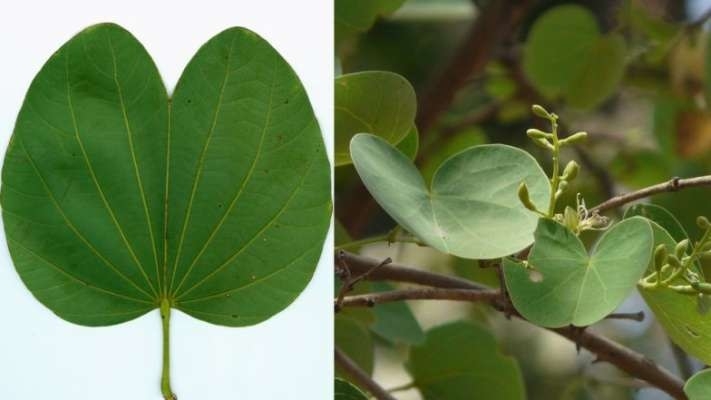Aapta leaves: A natural treatment for diabetes
| Date :02-Oct-2019 |

By Rajendra Diwe :
Dusshera is celebrated across the country after the Navratri. The tenth day is known as Vijaya Dashmi or Dashehara. There is a unique tradition in Maharashtra to exchange the leaves of ‘Sona’ or ‘Aapta’ or ‘Kachnar’ on this day. Botanically there are many varieties of these leaves. But Bauhinia racemosa and Bauhinia variegata are very popular. There are many mythological stories regarding these varieties. The leaves of Bauhinia racemosa are also called as Biddi Patta or Bidi leaves because these leaves are used for making Bidis in East Vidarbha. Trees of Bauhinia mostly grow at Forest areas in Rainy season. The fresh young leaves are cooked as vegetable.
Flowers are used as vegetable. Pods are also said to be eaten after roasting, but not commonly used. Bauhinia racemosa variety is known as Aapta while the variety Bauhinia variegata is known as Kachnar. Aapta is a small fibrous tree and has leaves with two lobes and has small white flowers. Kachnar which has pink flowers gets mistaken for the Aapta. Aapta is known in English as Burmese Silk Orchid. In Gujarati it is termed as Apto, Asundro; in Hindi it is known as Ashta, Jhinjeri, Katmauli, Kachnal; in Sanskrit it is known as Yamalapatrakah, Yugmapatra, Ashmantaka, Kanchini; in Marathi it is known as Sonpatta or Aapta; in Tamil it is known as Sittacha, Atti, Tataki, Kokku mandarai; in Kannada it is called as Aapta, Aralukadumandara, Vana samtige; in Bengali it is known as Banraj; in Konkani it is known as Apto; in Odisha it is known as Omboroda; in Punjabi it is Kosundra; and In Malayalam it is known as Arampaali, Kutabuli, Malayaththi; in Telugu it is known as Arechettu etc.
The other variety is known in English as orchid tree, camel’s foot, mountain ebony, Napoleon’s hat, paper mulberry, poor man’s orchid, bauhinia; in Bengali it is known as swet-kanchan, rakta-kanchan, rakta-kamhar; In Hindi it is called as bogakatra, koliar, rakthakanchan, mandari, kural, gurial, gwiar, kachnar, padrian; in Malayalam - akbar tapak kerbau, kupu-kupu, kotidaram; in Sanskrit is known as kanchanar, tamrapushpi; in Tamil it is called as chemmonadarei, segapumanchorii etc. Aapta has been used widely for the treatment of diabetes since ancient times.
Along with its medicinal importance the tree having great traditional value in India. The leaves, flowers and flower buds are eaten as vegetables. Leaves make good fodder and are greedily eaten by sheep, goats and cattle. The buds being consumed as a vegetable, bees have little chance of taking proper advantage of the bloom. The bark yields a suitable fibre. The tree yields a gum. The bark produces tannins, used in various shades of brown. The bark decoction is used for diarrhoea control, as an astringent alternative and for treating scrofula, skin diseases and ulcers. The showy fragrant, pink, purple or white flowers make the tree attractive for an ornamental and for avenue plantings. Some scientific research studies have confirmed that an extract of these leaves has antimicrobial and antioxidant effects to fight different bacterial and fungal infections. It inhibits the growth of Bacillus subtilis and fights against Candida albinos and hence can be used in the treatment of fungal infections.
Also the studies have recommended the use of Aapta in the treatment of asthma traditionally because of their antihistaminic action. The leaves’ extract possesses significant ant diabetic activity by reducing blood glucose level. It also normalises adipose tissues and lipid level. Due to its potential, it may be an effective drug for the treatment of diabetes and related complications like obesity. The extract improves the lipid profile by decreasing the levels of serum triglycerides, total cholesterol, LDL and increasing HDL cholesterol.